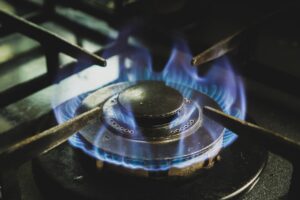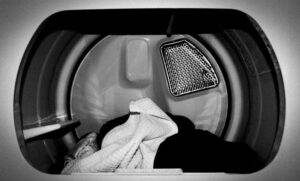Introduction: Understanding the Basics of Washer Repair
Maintaining and repairing your washer is essential for ensuring its longevity and optimal performance. A malfunctioning washer can disrupt your daily routine and lead to costly repairs or replacements. By understanding the basics of washer repair, you can save time and money by addressing common issues yourself.
To begin, it’s important to have a basic knowledge of how a washer works. A typical washer consists of several components, including a motor, pump, control board, timer, lid switch, and various hoses and valves. The motor powers the drum to agitate and spin the clothes, while the pump drains the water from the machine. The control board and timer regulate the different cycles and settings of the washer. The lid switch ensures that the machine does not operate when the lid is open.
Identifying Common Washer Problems: A Quick Guide
There are several common issues that can arise with a washer. By being aware of these problems and their signs, you can quickly identify and address them. Some common problems include a washer that won’t turn on, won’t drain, makes excessive noise, leaks water, won’t spin, won’t agitate, or smells bad.
How to Fix a Washer That Won’t Turn On
If your washer won’t turn on, there are a few troubleshooting steps you can take before calling a professional. First, check the power source and outlet to ensure that there is electricity flowing to the machine. If the power source is working properly, you can test the lid switch by manually activating it with a screwdriver or pen. If the lid switch is faulty, it may need to be replaced. Finally, inspect the timer and control board for any visible signs of damage or malfunction.
Dealing with a Washer That Won’t Drain
A washer that won’t drain can be frustrating and messy. To address this issue, start by checking for clogs in the drain hose or pump. Remove any debris or blockages that may be preventing the water from draining properly. Next, inspect the lid switch to ensure that it is functioning correctly. If the lid switch is faulty, it may need to be replaced. Finally, test the drain pump motor by listening for any unusual noises or vibrations. If the motor is not working properly, it may need to be repaired or replaced.
Solving the Mystery of a Noisy Washer
A noisy washer can be a sign of loose or worn parts. Start by checking for loose screws or bolts and tighten them if necessary. Inspect the drum bearings for any signs of wear or damage. If the bearings are worn out, they will need to be replaced. Additionally, test the drive belt by spinning it manually. If the belt is loose or worn, it may need to be adjusted or replaced.
Understanding the Causes of a Leaking Washer
A leaking washer can cause water damage and should be addressed promptly. Start by checking for damaged hoses or connections. Tighten any loose connections and replace any damaged hoses. Inspect the door seal or gasket for any signs of wear or damage. If the seal is worn out, it will need to be replaced. Finally, test the water inlet valve by checking for any leaks or drips when the machine is not in use. If the valve is faulty, it may need to be repaired or replaced.
How to Fix a Washer That Won’t Spin
If your washer won’t spin, there are a few potential causes to consider. First, check for a broken or worn drive belt. If the belt is damaged, it will need to be replaced. Next, inspect the motor coupler for any signs of wear or damage. If the coupler is faulty, it may need to be replaced. Finally, test the lid switch by manually activating it with a screwdriver or pen. If the lid switch is not functioning properly, it may need to be replaced.
Dealing with a Washer That Won’t Agitate
If your washer won’t agitate, there are a few troubleshooting steps you can take. First, check for a broken or worn drive belt. If the belt is damaged, it will need to be replaced. Next, inspect the agitator dogs for any signs of wear or damage. If the dogs are worn out, they will need to be replaced. Finally, test the motor coupler by checking for any unusual noises or vibrations. If the coupler is faulty, it may need to be repaired or replaced.
Troubleshooting a Washer That Smells Bad
If your washer has a bad odor, it’s important to address the issue to prevent further problems. Start by cleaning the washer drum and detergent dispenser. Remove any residue or buildup that may be causing the odor. Next, check for clogs in the drain hose or pump. Remove any debris or blockages that may be causing the odor. Finally, run a cleaning cycle with vinegar or bleach to eliminate any remaining odors.
Can DIY Troubleshooting and Maintenance Help with Common Washer Problems?
When it comes to dealing with common washer problems, washing machine troubleshooting and maintenance can be a game-changer. By learning how to diagnose and fix issues on your own, you can save time and money. Whether it’s a noisy spin cycle or a clogged filter, DIY troubleshooting can make a big difference.
Conclusion: When to Call a Professional for Washer Repair
While many washer issues can be addressed with basic troubleshooting and repairs, there are times when it’s best to call a professional. If you are unsure of how to safely repair your washer or if the problem persists after attempting basic repairs, it’s important to seek professional help. Additionally, always prioritize safety when working with appliances and follow proper guidelines and precautions. When choosing a repair service, look for one that is reliable, experienced, and offers warranties on their work. By taking care of your washer and addressing issues promptly, you can extend its lifespan and ensure optimal performance for years to come.
If you’re in need of washer repair, you’ll definitely want to check out the blog section of 911 Appliance’s website. They have a variety of informative articles that can help you troubleshoot common washer issues and even provide tips for DIY repairs. One article that caught my attention is “5 Common Washer Problems and How to Fix Them.” It offers practical solutions for problems like a leaking washer, noisy spin cycle, and more. To read this helpful article, click here.



